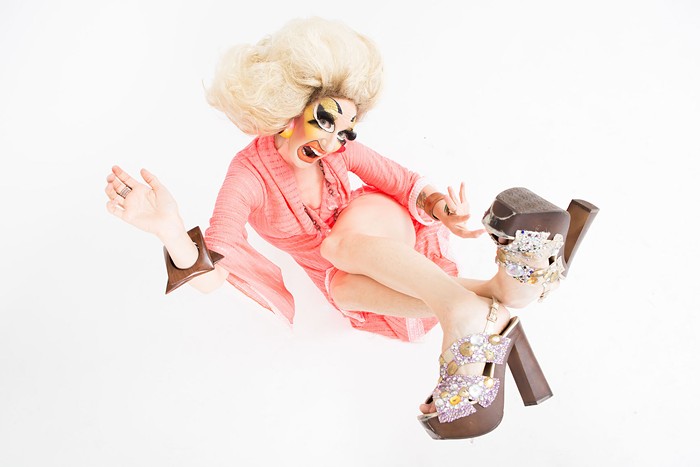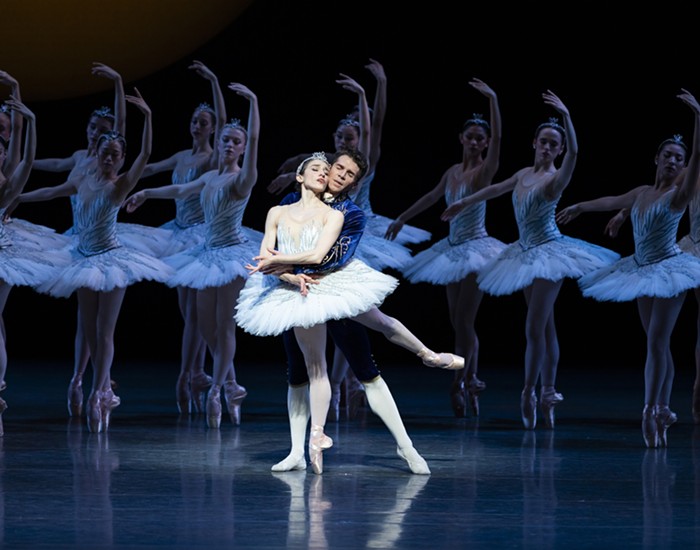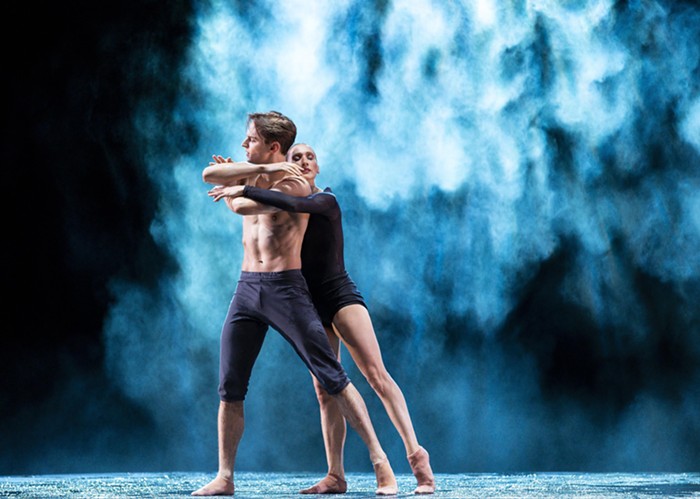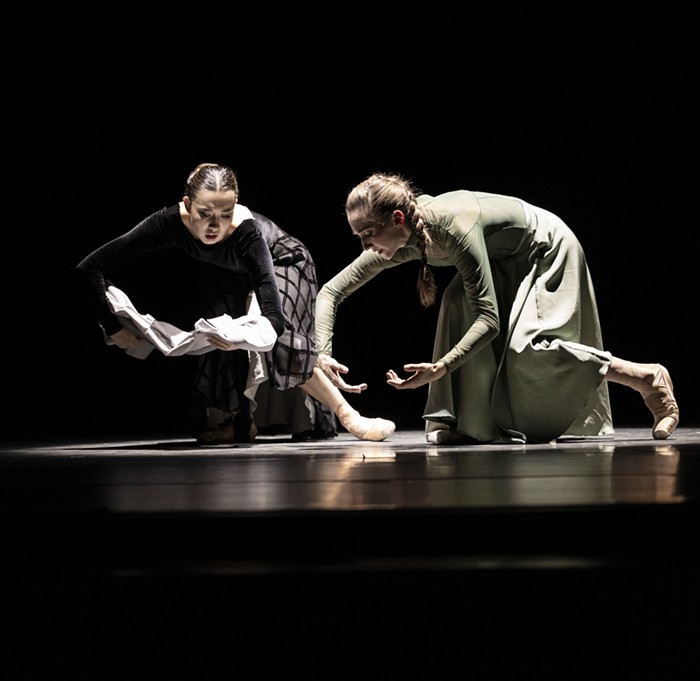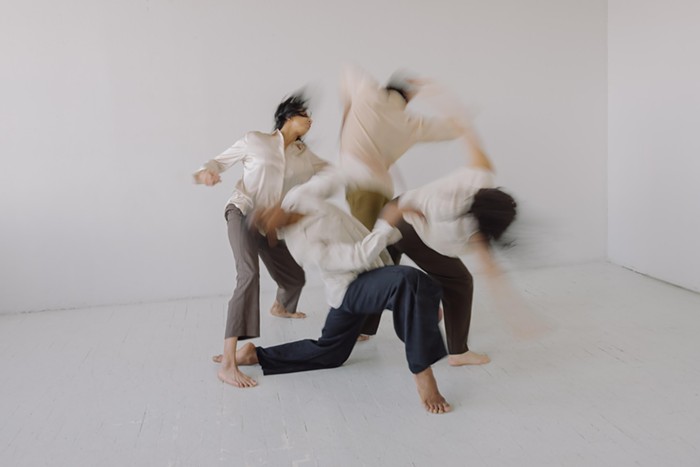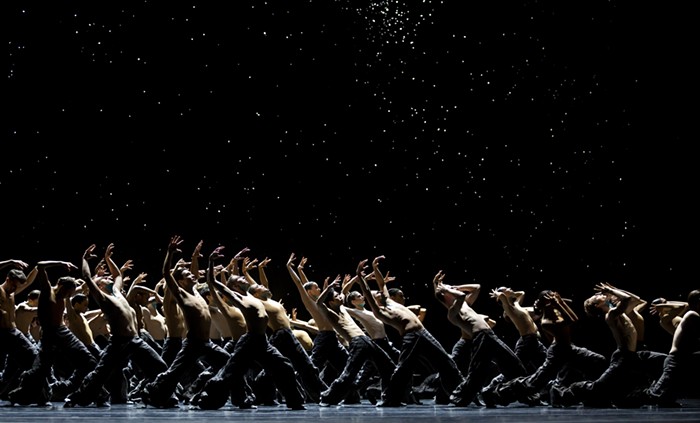
Bodies of Water is a five-hour drop-in durational performance choreographed by Alice Gosti, and it looks preeeeettttttyyyy good. Dancing will commence at 5:00 p.m. this Saturday down at Waterfront Park, and Gosti told me the general plan is to celebrate and critique Seattle’s relationship with water. There's going to be all kinds of wild stuff going on including but not limited to amplified environment noises, a performance by The Beaconettes, and a cameo by a marching band. But at the center of the durational spectacle is eight dancers who have to move around in complex ways for the entire five-hour performance. A couple weeks ago, I stopped by a rehearsal to get a sense of what that might look like.
Gosti and the dancers (Alyza DelPan-Monley, Lorraine Lau, Kaitlin McCarthy, Amy Ross, Erin Johnson, Sabina Smith-Moreland, Hallie Scott and Ariana Bird) have been rehearsing down at the Waterfront occasionally, but their residency with Velocity allows them to make use of V2, a studio space that temporarily replaced the Value Village on 11th Ave. V2 is massive. So massive the crew can recreate almost perfectly the Waterfront’s staging area.
When I joined them, the dancers were practicing a swirling box step that made them look like little whirlpools about to crash into each other.
“Eh, that’s not going to work,” Gosti tells them.
She’s trying to solve a problem. She needs to find some way to transition from a section where the dancers resemble slow-moving water to a section where the dancers resemble whitewater rapids, and all of this with the understanding that the audience could be watching the performance from any angle. She decides to shelve the concern and move on to another section.
The dancers line up opposite each other and play what looks like a complicated game of red rover. They push and pull each other around and perform a lot of quick trust falls, movements, Gosti tells me, that reflect the “push and pull” social theory concerning immigration. People leave their countries for two reasons: They’re pulled to a country because of opportunity, or they’re pushed from their home because of troubles.
If I relax my eyes, the dancers look like a stream of water coursing down a riverbed, breaking against the banks and sloshing up over them. After a couple of run-throughs, Gosti asks them if there’s anything they thought they could/should “shift” in the section.
A dancer-driven conversation ensues. The vocabulary is one-third vocal and two thirds physical. The women (the dancers are all women) look at each other and mirror each other's movements, smile or project confusion, correct themselves and then square back up to begin. Gosti nods her head, reminds them that their bodies should be fluid but their feet quick, and then boom: Seven women become a single body of water. They bump into each other, eddy, leap over each other, spread apart, converge.

